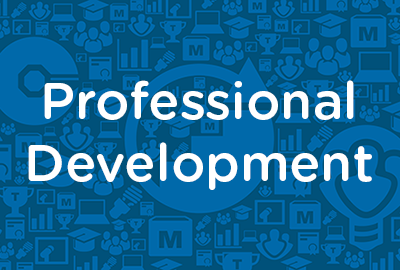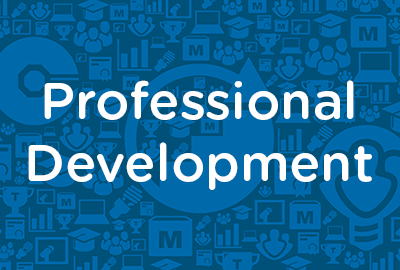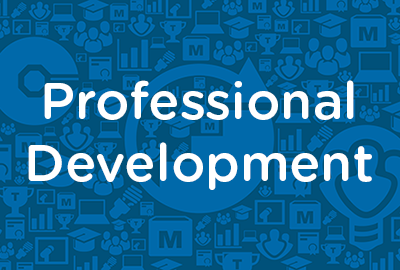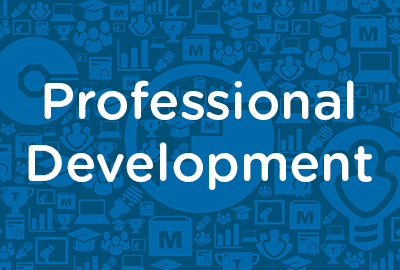 |
Interviewing Skills: Evaluating and Deciding (Instructor Guide) |
0.67 |
When determining which candidate will be most successful in the job and your organization, you must complete two important steps. First, you should assess each candidate’s experience and past performance, and compare them to the job’s success factors. Then, you should compare candidates with one another to identify the one with the best fit for the job and culture.
In this course you will learn to: identify the types of bias and the steps to evaluate a candidate, and identify several criteria for ranking candidates.
This Instructor's Edition of this course includes notes and suggestions to assist you in presenting the material, whether in an in-person classroom setting, or as an instructor-led online or distance-learning course. It also provides you with the answers to questions found in mid-lesson activities, as well as in the quiz that concludes the course. |
 |
Interviewing Skills: Federal Laws (Instructor Guide) |
0.67 |
Congress enacted the Americans with Disabilities Act (ADA) to provide a clear and comprehensive mandate to eliminate discrimination in employment against individuals with disabilities. This Act continues to have long-term benefits for American businesses, since it helps ensure that all workers have an opportunity to maximize their contributions to the productivity of the American economy.
The Immigration Reform and Control Act (IRCA) was signed into law in 1986 because of the large number of illegal aliens working in the United States. The purpose of the Act was to preserve jobs for those who are legally entitled to these, such as U.S. citizens and foreign nationals eligible to work in the United States. The Act is not a negative response to the diversification of the work force, but rather an acknowledgement of it, protecting the rights of both employer and candidate.
In this course you will learn to: define disability and identify the questions that are prohibited by the Americans with Disabilities Act, and hire employees legally under the Immigration Reform and Control Act and use Form I-9.
This Instructor's Edition of this course includes notes and suggestions to assist you in presenting the material, whether in an in-person classroom setting, or as an instructor-led online or distance-learning course. It also provides you with the answers to questions found in mid-lesson activities, as well as in the quiz that concludes the course. |
 |
Interviewing Skills: Following Up (Instructor Guide) |
0.67 |
Once you have conducted the interview, you need to do a follow-up and perform a self-evaluation of your interviewing skills.
In this course you will learn to: complete follow-up tasks after an interview.
This Instructor's Edition of this course includes notes and suggestions to assist you in presenting the material, whether in an in-person classroom setting, or as an instructor-led online or distance-learning course. It also provides you with the answers to questions found in mid-lesson activities, as well as in the quiz that concludes the course. |
 |
Managing Performance: Performance Improvements (Instructor Guide) |
1.34 |
In this course you will learn to: plan performance improvements, handle performance problems, and use effective communication to solve performance problems, conduct status meetings, and maintain documentation of ongoing communication. |
 |
Interviewing Skills: Handling and Conducting (Instructor Guide) |
1.00 |
Some interviewees demand a particularly focused and skillful use of interviewing techniques. Your ability to handle talkative, uncommunicative, nervous, or inexperienced candidates is important in order to get an accurate assessment of the candidate’s abilities. If you develop ways of handling various types of interviewees before the interview begins, you’ll be able to encourage them to respond positively and share information. You’ll also avoid the mistake of eliminating candidates on the basis of value judgments or preconceptions.
An interview is a two-way conversation designed to gather information about, and provide information to the candidate, so you both can decide on the fit between the position, the organization, and the candidate. Good interviews flow smoothly when both the interviewer and the candidate take part in an information exchange.
In this course you will learn to: handle an interview by developing an understanding of the various types of candidates, and conduct an interview by following a specific structure and using effective communication techniques.
This Instructor's Edition of this course includes notes and suggestions to assist you in presenting the material, whether in an in-person classroom setting, or as an instructor-led online or distance-learning course. It also provides you with the answers to questions found in mid-lesson activities, as well as in the quiz that concludes the course. |
 |
Interviewing Skills: Planning and Preparing (Instructor Guide) |
1.00 |
Once you have written success factors related to the position you are filling, you need to plan for the interview.
In this course you will learn to: identify the steps to establish a plan for an interview, and identify the steps to prepare an office for an interview.
This Instructor's Edition of this course includes notes and suggestions to assist you in presenting the material, whether in an in-person classroom setting, or as an instructor-led online or distance-learning course. It also provides you with the answers to questions found in mid-lesson activities, as well as in the quiz that concludes the course. |
 |
Business Problem Solving: Critical Thinking and Information Analysis (Instructor Guide) |
1.34 |
Critical thinking is the ability to understand how others think as well as how your own thinking process works. It also includes the ability to objectively evaluate the evidence used to support beliefs or arguments that lead to conclusions. It is an important business and problem-solving skill. Critical thinking helps you to evaluate various methods of reasoning that can be used in problem solving.
In this course you will learn to: use reasoning and logic to think critically, define and use quantitative analysis techniques, and define and use qualitative analysis techniques.
This Instructor's Edition of this course includes notes and suggestions to assist you in presenting the material, whether in an in-person classroom setting or as an instructor-led online or distance-learning course. It also provides you with the answers to questions found in mid-lesson activities, as well as in the quiz that concludes the course. |
 |
Business Problem Solving: Problem Solving in the Corporate World (Instructor Guide) |
0.84 |
Problem-solving cultures greatly influence the problem-solving process in organizations. Recognizing the culture that exists in your organization will permit you to develop effective solutions. This approach needs employees with a wide variety of skills and talents.
In this course you will learn to: identify the types of problem solvers and the skills they must possess, and identify different corporate cultures.
This Instructor's Edition of this course includes notes and suggestions to assist you in presenting the material, whether in an in-person classroom setting or as an instructor-led online or distance-learning course. It also provides you with the answers to questions found in mid-lesson activities, as well as in the quiz that concludes the course. |
 |
Business Problem Solving: Problem-Solving Basics (Instructor Guide) |
1.25 |
Problem-solving is aimed at eliminating problems. The problem-solving process involves identifying a problem, gathering information, generating and evaluating options, and implementing solutions.
Effective problem-solving needs the coordination of knowledge, experience, attitude, intuition, and the abilities of an individual or team. By successfully eliminating problems the first time, you will save your company’s resources and improve its operation.
In this course you will learn to: define the fundamentals of problem-solving, and identify effective problem-solving approaches.
This Instructor's Edition of this course includes notes and suggestions to assist you in presenting the material, whether in an in-person classroom setting or as an instructor-led online or distance-learning course. It also provides you with the answers to questions found in mid-lesson activities, as well as in the quiz that concludes the course. |
 |
Business Problem Solving: Problem-Solving Process (Instructor Guide) |
1.67 |
You need highly developed problem-solving skills to manage employees and achieve organizational goals. Understanding the problem-solving process is the first step in solving problems effectively.
In this course you will learn to: identify the problem by analyzing the situation, gathering information, and identifying solution criteria, commit to a solution by generating, choosing, and implementing one, confirm that the problem has been eliminated by evaluating the solution.
This Instructor's Edition of this course includes notes and suggestions to assist you in presenting the material, whether in an in-person classroom setting or as an instructor-led online or distance-learning course. It also provides you with the answers to questions found in mid-lesson activities, as well as in the quiz that concludes the course. |
 |
Business Problem Solving: Problem-Solving Teams (Instructor Guide) |
1.00 |
Problem-solving teams are created to solve a specific business problem. Ideally, such a team should have members from different departments of your organization. However, you need to develop skills to focus team members on a common goal.
As a team leader, you might be expected to create a team, rather than simply manage a group of people assigned to complete a task. You will play a central role in helping team members interact, communicate, and work together. You will also be expected to plan and execute team meetings. Meetings can be an effective way to communicate information to the group, to decide on an action, to set goals, and to motivate and support team members.
In this course you will learn to: build and manage problem-solving teams and conduct effective meetings, and motivate team members and effectively communicate with them.
This Instructor's Edition of this course includes notes and suggestions to assist you in presenting the material, whether in an in-person classroom setting or as an instructor-led online or distance-learning course. It also provides you with the answers to questions found in mid-lesson activities, as well as in the quiz that concludes the course. |
 |
Managing Performance: Legal Appraisals (Instructor Guide) |
0.84 |
In this course you will learn to: identify legal appraisals and responsibilities in relation to laws enforced by the EEOC, and identify risks of legal challenges and the importance of maintaining positive communication. |
 |
Coaching: Communication (Instructor Guide) |
1.00 |
Language is an important coaching tool. The use of suitable words during coaching will help you create relationships, repair employee confidence, and establish plans for employee success. As a coach, you must select words that directly influence your employees’ attitude, behavior, and performance. The use of appropriate language during your coaching sessions will help you convey your messages in a clear and encouraging manner.
In this course you will learn to: clearly express your message by using appropriate language, identify and use nonverbal methods of communication, and receive the desired information by asking effective questions.
This Instructor's Edition of this course includes notes and suggestions to assist you in presenting the material, whether in an in-person classroom setting or as an instructor-led online or distance-learning course. It also provides you with the answers to questions found in mid-lesson activities, as well as in the quiz that concludes the course. |
 |
Coaching: Fundamentals of Coaching (Instructor Guide) |
1.00 |
Coaching is the continuous effort to help employees maximize their abilities through personalized counseling and advice. The coaching process not only trains employees to become familiar with business procedures and expectations, but also motivates them to reach both individual and company goals.
Coaching is beneficial to employees because it encourages them to discover their worth and potential. Through proper coaching sessions, employees build confidence, improve their work habits, and increase their productivity.
In this course you will learn to:
1. Define coaching and identify the qualities of an effective coach
2. Build a coaching foundation and plan a coaching strategy.
This Instructor's Edition of this course includes notes and suggestions to assist you in presenting the material, whether in an in-person classroom setting or as an instructor-led online or distance-learning course. It also provides you with the answers to questions found in mid-lesson activities, as well as in the quiz that concludes the course. |
 |
Coaching: Interpersonal Meetings (Instructor Guide) |
0.75 |
As a coach, your communication skills are critical to your success and the employees you are coaching. In many office environments, it can be tempting to get through the day without much personal contact by relying on technology. However, nothing can replace the benefits of personal interaction, or face-to-face communication.
This Instructor's Edition of this course includes notes and suggestions to assist you in presenting the material, whether in an in-person classroom setting or as an instructor-led online or distance-learning course. It also provides you with the answers to questions found in mid-lesson activities, as well as in the quiz that concludes the course. |
 |
Coaching: The Coaching Process (Instructor Guide) |
1.50 |
In this course you will learn to: establish a solid coaching foundation by creating and maintaining healthy coach-employee relationships, be an effective coach by understanding your coaching objectives and communicating the expectations and goals to employees, and provide employees with positive and constructive feedback by monitoring and evaluating their performance.
This Instructor's Edition of this course includes notes and suggestions to assist you in presenting the material, whether in an in-person classroom setting or as an instructor-led online or distance-learning course. It also provides you with the answers to questions found in mid-lesson activities, as well as in the quiz that concludes the course. |
 |
Conducting Meetings: Managing Meetings (Instructor Guide) |
0.67 |
In this course you will learn to: identify the types of meeting leaders and the characteristics of an effective meeting leader. identify the process to follow when making decisions in a meeting, and explain how to identify and minimize group think in meetings.
This Instructor's Edition of this course includes notes and suggestions to assist you in presenting the material, whether in an in-person classroom setting or as an instructor-led online or distance-learning course. It also provides you with the answers to questions found in mid-lesson activities, as well as in the quiz that concludes the course. |
 |
Conducting Meetings: Fundamentals of Conducting Meetings (Instructor Guide) |
0.67 |
Meetings allow groups to function, define goals, contribute to participants’ morale and status, as well as develop organizational culture. During meetings, participants are able to exchange information and update one another on current events. When information is shared among participants, they are able to work together to create ideas and solutions, and make decisions to progress toward the group’s goals.
In order for a group to function effectively, participants must be working toward accomplishing a common goal. Meetings allow participants to define goals as a group, which helps them agree on the terms of the goals, such as how and when they’ll be accomplished.
When the meeting leader encourages input from participants, employee morale increases. Encouraging communication satisfies the participants’ desire to play an active role in the organization. When participants understand that their opinions are valued, they feel that they’ve contributed to their organization.
Meetings also help develop the organization’s culture when meeting leaders demonstrate the values and attitudes preferred by the organization. Leaders display organizational values in meetings to reinforce the behavior they desire from participants.
In this course you will learn to: identify the benefits, types and misconceptions about meetings, plan a meeting, participate in a meeting, and close a meeting.
This Instructor's Edition of this course includes notes and suggestions to assist you in presenting the material, whether in an in-person classroom setting, or as an instructor-led online or distance-learning course. It also provides you with the answers to questions found in mid-lesson activities, as well as in the quiz that concludes the course. |
 |
Managerial Leadership: Leading with a Vision (Instructor Guide) |
1.50 |
An organization does not generate itself—it is founded by one or more people who take the initiative to put an idea into action. Leadership is the cement that unites members of an organization to achieve a common end.
Leadership helps members of an organization understand the organization’s purpose, and makes sure they do not lose sight of the organization’s vision. If an organization functions ineffectively, leadership helps members cope with the changes needed to improve the organization, enabling fulfillment of the vision or goals.
Leadership also helps members of an organization work to their full potential. If a team has the ability and resources to complete a task, leadership can provide the motivation and inspiration the team needs to complete the task.
In this course you will learn to: Identify a leader, define the vision of an organization and write a vision statement, and relate goals to the vision statement.
This Instructor's Edition of this course includes notes and suggestions to assist you in presenting the material, whether in an in-person classroom setting or as an instructor-led online or distance-learning course. It also provides you with the answers to questions found in mid-lesson activities, as well as in the quiz that concludes the course. |
 |
Managing Performance: Performance-Planning Meetings (Instructor Guide) |
1.17 |
In this course you will learn to: identify the steps to conduct an effective performance-planning meeting, identify the process of providing feedback, and identify types of coaching, and document coaching and feedback efforts. |
 |
Managerial Leadership: Defining Employee Roles and Priorities (Instructor Guide) |
1.50 |
A vision is created by an organization to inspire its members to work together to reach for an ideal of what the organization can become. The members of the organization should use the vision as the standard to determine the day-to-day functions of their individual roles. The vision is the guide to use every time an action is taken, a decision is made, or a plan is developed to improve the organization or the people in it. An organization’s vision should enable the members in every role to do what is in the best interest of the organization.
In this course you will learn to: determine leader roles and strengthen employee roles, and align employee priorities and evaluate employee performance.
This Instructor's Edition of this course includes notes and suggestions to assist you in presenting the material, whether in an in-person classroom setting or as an instructor-led online or distance-learning course. It also provides you with the answers to questions found in mid-lesson activities, as well as in the quiz that concludes the course. |
 |
Managerial Leadership: Employing Motivational Strategies (Instructor Guide) |
0.50 |
You need to use motivational strategies in your leadership to help your employees perform optimally, and to make them feel as though they are helping meet a need. When you motivate your employees to accomplish their goals, and give them the necessary feedback to optimize their performance, they feel they are helping meet the organization’s needs.
You, your employees, and your organization all benefit when you use motivation in leadership. You benefit because, through motivation, your work group will perform optimally. Your employees benefit because they experience job satisfaction and success in accomplishing their goals. Your organization benefits because its members are more committed to helping it be successful and grow.
In this course you will learn to: motivate employees and overcome employee apathy.
This Instructor's Edition of this course includes notes and suggestions to assist you in presenting the material, whether in an in-person classroom setting or as an instructor-led online or distance-learning course. It also provides you with the answers to questions found in mid-lesson activities, as well as in the quiz that concludes the course. |
 |
Managerial Leadership: Planning for Change (Instructor Guide) |
0.50 |
In order to understand the need for change, you must remember one thing: change is constant. Change is a necessary response to an active force. The active force can either be a pressure, which you can attempt to manage in a step-by-step manner, or a crisis, which requires your immediate attention.
In this course you will learn to: identify the phases of the change process, and communicate change and identify the benefits of change.
This Instructor's Edition of this course includes notes and suggestions to assist you in presenting the material, whether in an in-person classroom setting or as an instructor-led online or distance-learning course. It also provides you with the answers to questions found in mid-lesson activities, as well as in the quiz that concludes the course. |
 |
Managerial Leadership: Motivating Employees Through Change (Instructor Guide) |
0.50 |
Your organization’s vision was created to inspire and unite the members of the organization as they work toward achieving common goals. Change can distract employees from the vision because going through the change process can be intensely personal and emotional. Remembering the vision and its purpose can keep your employees focused on their role in the company.
In this course you will learn to: motivate employees through a change and prepare for difficulty, and overcome resistance and resolve conflict.
This Instructor's Edition of this course includes notes and suggestions to assist you in presenting the material, whether in an in-person classroom setting or as an instructor-led online or distance-learning course. It also provides you with the answers to questions found in mid-lesson activities, as well as in the quiz that concludes the course. |
 |
Managerial Leadership: Coping Through a Change Process (Instructor Guide) |
1.00 |
Whether your employees perceive change as positive or negative, you might encounter an emotional response from them. They will have many questions regarding their roles, competencies, and, possibly, even their futures. Your employees might feel they are being forced out of a comfort zone, and they might experience a loss of familiarity. Typical responses during a change include feelings of doubt, anxiety, fear, and anger. Sometimes, changes in the workplace can trigger a severe emotional response.
In this course you will learn to: respond to distress and reduce stress, and succeed through failure and deal with mistakes.
This Instructor's Edition of this course includes notes and suggestions to assist you in presenting the material, whether in an in-person classroom setting or as an instructor-led online or distance-learning course. It also provides you with the answers to questions found in mid-lesson activities, as well as in the quiz that concludes the course. |


























